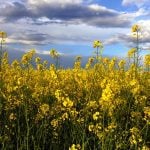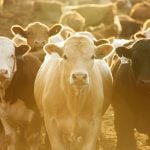With new higher-yielding carinata varieties on the market, farmers have another oilseed to add to their rotations
In the mid-19th century, Captain John Palliser described the region that now includes southeastern Alberta and southwestern Saskatchewan as a desert or semi-desert, and deemed the area unsuitable for settlers. Despite climatic limitations, farmers have settled Palliser’s Triangle, and they now have another hardy oilseed to add to their rotations — carinata, also known as Ethiopian mustard. […] Read more


